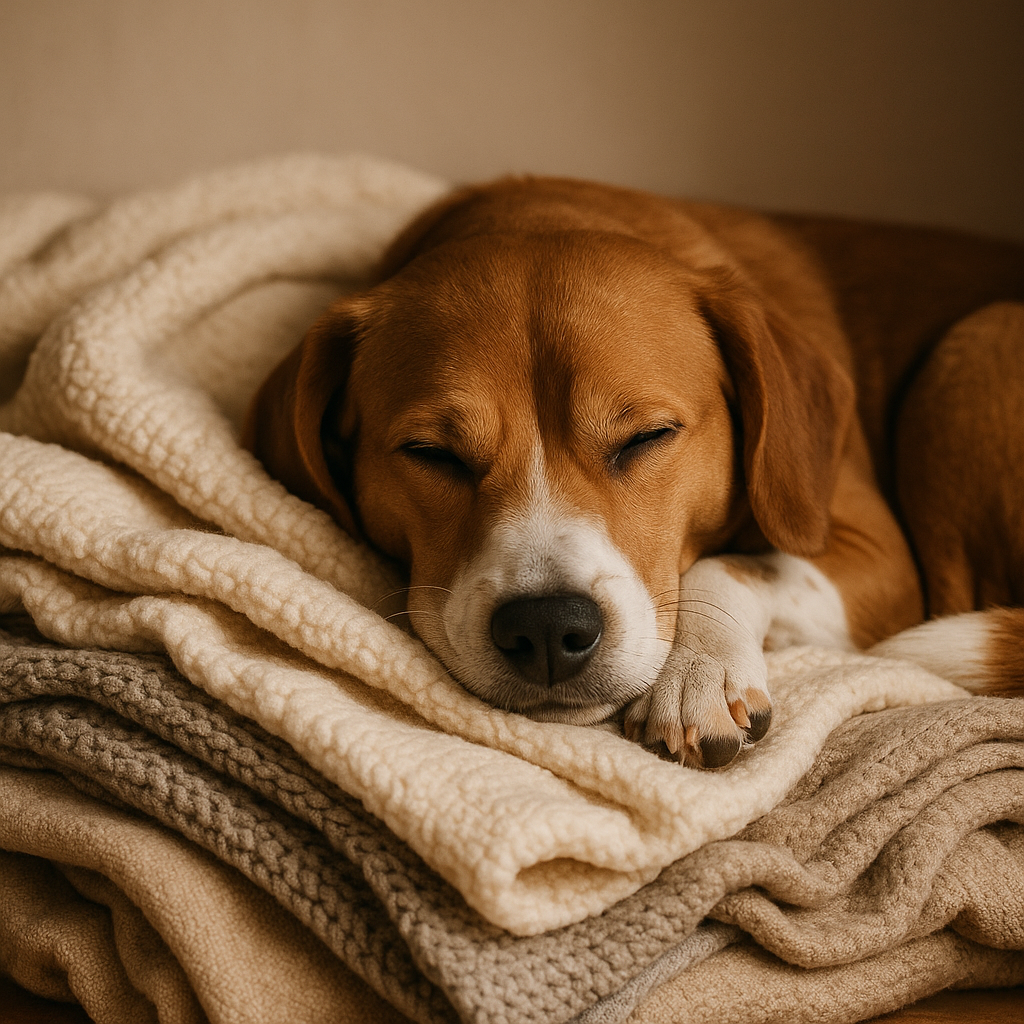Keeping my pet engaged both mentally and physically means a happier and more well-behaved companion. Enrichment doesn’t require spending a lot of money. I’ve found that many effective enrichment activities use things I already have at home. These simple ideas not only prevent boredom but also help my pet feel more fulfilled and less anxious, whether I have a cat, dog, bird, or even a small animal. Thoughtful enrichment from everyday household items builds a routine that both my pet and I can enjoy, even on busy days.

Why Affordable Enrichment Really Matters
Every pet needs activities that keep their mind and body active. When I skip out on enrichment, I can see signs of boredom or even unwanted behaviors, like chewing on things or scratching furniture. By dedicating a bit of time, I help guide my pet into more positive routines and create a stress-free environment at home. Consistent enrichment goes a long way in supporting my companion’s health.
- Prevents Restlessness: A mentally busy pet is less likely to develop bad habits or show anxiety.
- Encourages Natural Behaviors: Pets love to hunt, sniff, chew, dig, and forage. Giving them safe ways to do these things satisfies their instincts and keeps them mentally sharp.
- Strengthens Bonds: My pet looks forward to the fun we share, making us closer over time. Cooperating during play builds trust.
- Improves Well-Being: Simple activities can give a boost to daily happiness and lower stress for both of us. My pet seems more alert and content after enrichment sessions.
For more ways to support your pet’s happiness, check out Mental Stimulation for Your Senior Dog.
DIY Pet Enrichment from Things I Already Own
Homemade enrichment projects are just as useful as store-bought options. I often stumble upon the fact that with a few household objects (and some supervision), I can keep my pet entertained for hours without breaking the bank.
- Towel Puzzles: I hide treats or kibble inside a rolled-up towel. My dog or cat uses its nose and paws to figure out how to get the treats out. This works for small pets, too, like rabbits and guinea pigs.
- Cardboard Boxes: Any cat or small pet loves an empty box. I cut holes for peeking, make tunnels, or pile boxes to create towers. Scratching, hiding, or climbing—boxes handle it all and are endlessly reusable.
- Toilet Paper Rolls: I fill them with treats, bend the ends closed, and let my bird, cat, or small dog work at getting them out. Rolling or shredding the roll is half the fun for curious pets.
- Plastic Bottles: After removing labels and making sure there are no sharp edges, I put some treats in and let my pet roll the bottle around. Supervision is important here, since plastic can sometimes break and pose a risk.
Other household items, like old muffin tins for treat games or paper bags for exploring, are simple ways to keep my pet’s mind active on a budget.
Low-Cost Games and Everyday Activities
Activity time doesn’t require lots of gear; most games need little more than imagination and some enthusiasm. When my budget is tight, these affordable games become go-tos for fun and connection. Quality playtime keeps my pet curious and happy.
- Hide and Seek: I hide treats or favorite toys around the house. Watching my pet hunt them down is as entertaining for me as it is for them. Changing up hiding spots keeps them guessing and sharp.
- Training Sessions: Teaching a new trick only takes time and patience. I use pieces of kibble as a reward, and the positive attention helps my pet learn faster. Trying handshakes, spins, or new cues introduces fresh learning.
- Chase Games: For cats, a simple feather stick, crumpled paper, or a flashlight beam provides excitement and encourages exercise. For dogs, I toss soft balls or safe toys down a short hallway to encourage quick sprints.
- Frozen Treats: I freeze some kibble or a healthy snack in ice cubes. My dog loves licking and chewing to get to the treat inside, especially on hot days. For cats, small ice cubes in the water bowl can add curiosity and playfulness.
Looking for training rewards? I find this guide helpful: Best Treats and Rewards for Different Pets.
Budget-Friendly Pet Accessories and Upcycling Tips
I can find or create fun accessories for my pet without spending a lot. Thrift stores and household supplies often hold hidden treasures, and upcycling makes it easy to give old items new life for my pet’s entertainment and comfort.
- Thrift Store Finds: Gently used toys, blankets, or pet beds can often be found for less than half the price of new ones. I always wash them well before using. Sometimes, I stumble upon treat balls or puzzle feeders for just a few dollars.
 Homemade Perches and Swings: For my bird, old broomsticks or sturdy branches tied with twine become natural perches or swings. Regular cleaning and checking the strength ensures safety.
Homemade Perches and Swings: For my bird, old broomsticks or sturdy branches tied with twine become natural perches or swings. Regular cleaning and checking the strength ensures safety.- DIY Scratching Posts: I use leftover wood, sisal rope, or even cardboard to create a scratching spot for my cat, saving my furniture from getting shredded. My cat prefers cardboard, but experimenting finds the best fit.
- Repurposed Beds: Old pillows, folded blankets, or a worn-out sweater can be transformed into a cozy resting spot with just a bit of folding and tucking. Layering soft materials steps up comfort big time.
Adding simple accessories or upcycling avoids extra spending and gives my pet a custom, comfy, and fun environment.
Tips Before Trying New Enrichment Methods
Not all pets react the same way to new activities or objects. I always watch closely and think about a few things first to make sure the experience stays fun and safe for everyone. A little preparation leads to a lot of enjoyment for both my pet and me.
- Supervise with New Items: Any homemade toy or upcycled accessory gets its first use with supervision, especially if it has small parts.
- Know What My Pet Likes: Some pets love food puzzles, while others prefer digging, chasing, or cuddling. I try out different things to learn what works best.
- Avoid Unsafe Materials: I never use anything toxic or sharp. Basic craft supplies and wood without chemicals are best for homemade projects.
- Rotate Toys: Just like with kids, pets get bored after seeing the same toy too many times. I change up routines and items to keep things interesting and get more life out of each toy.
Knowing When to Invest (Even on a Budget)
I sometimes find that a small investment lasts through years of use and brings a lot of joy. Items such as tough treat dispensing toys or basic scratching posts offer a lot of value. Checking for sales, browsing local buy/sell groups, and even swapping with other pet owners has helped me pick up quality items while sticking to my budget. Every now and then, investing in one sturdy accessory saves money long term versus replacing cheap toys constantly.
Advanced and Creative Enrichment Ideas
Once my pet gets used to basic games, I try to make things a little more challenging. Here are some ideas I’ve enjoyed, especially on rainy days or when my pet craves extra mental stimulation:
- Snuffle Mats: I make a snuffle mat by tying strips of fleece through a rubber sink mat. I bury kibble or treats, and my dog searches for them using his nose. This taps into natural foraging instincts.
- Obstacle Courses: I use chairs, broomsticks, and cushions to set up a mini obstacle course. This keeps my dog or cat physically active and mentally alert. Even birds and small animals can enjoy exploring new set-ups at floor or cage level.
- Cardboard Mazes: I tape boxes together to make tunnels and hiding spots. My rabbit and cat both enjoy exploring the maze and searching for treat surprises. Rearranging the maze layout gives new experiences without extra cost.
- DIY Dig Boxes: For small animals or dogs who love to dig, I fill a box or low tote with shredded paper or childsafe play sand and bury toys for them to find. This provides a safe outlet for digging behaviors indoors.
Mixing up these challenges helps prevent boredom and supports different types of play. Watching my pet solve problems gives me a sense of their unique personality, too. Adding or removing puzzle pieces keeps activities fresh as my pet’s skills improve.
The Basics: Where to Start with Pet Enrichment on a Budget
If I’m trying enrichment for the first time, I usually begin with just one or two activities and keep things simple. I observe what my pet enjoys most—whether it’s scent work, toy puzzles, or running around—then adjust as I go. Quality time, even in short bursts, always makes an impact and builds long-lasting good habits.
- Observe and Adapt: Some pets jump into games right away, others warm up more slowly. I watch their reactions and change activities based on interest, working at my pet’s pace.
- Mix It Up: Switching between food puzzles, active games, and cuddle time prevents predictability and keeps my pet excited about enrichment opportunities.
- Use What’s Available: I look for creative uses of what I already own before adding new supplies to my list. Simple everyday objects can often become the newest favorite toy or game.
Frequently Asked Questions
I often hear the same questions from friends and fellow pet lovers. Here’s what has worked best for me:
Question: What counts as enrichment for my pet?
Answer: Enrichment includes anything that gives your pet new experiences, physical activity, or mental puzzles. Games, foraging toys, new objects, and safe exploration opportunities all count towards keeping your pet happy and healthy.
Question: How much time should I spend on enrichment each day?
Answer: Even ten to twenty minutes of dedicated play or puzzle time per day makes a difference. If I’m home all day, I spread out activities in short bursts to keep my pet alert and involved.
Question: Are homemade toys safe?
Answer: Homemade toys can be great if they don’t have toxic ingredients or choking hazards. I always supervise my pet the first few times and check for damage before letting them continue playtime.
Practical and Fulfilling: Making Pet Enrichment Part of Daily Life
I’ve learned that pet enrichment doesn’t need to be costly or complicated to be rewarding. With a little creativity, I can easily add fun and challenge to my pet’s day by using items from around my house. What matters most is tuning into my pet’s interests and spending time together; that shared attention is worth more than anything money can buy. The sense of satisfaction I get seeing my pet thrive is the best reward for my efforts and creativity, and our bond keeps getting stronger each day.

